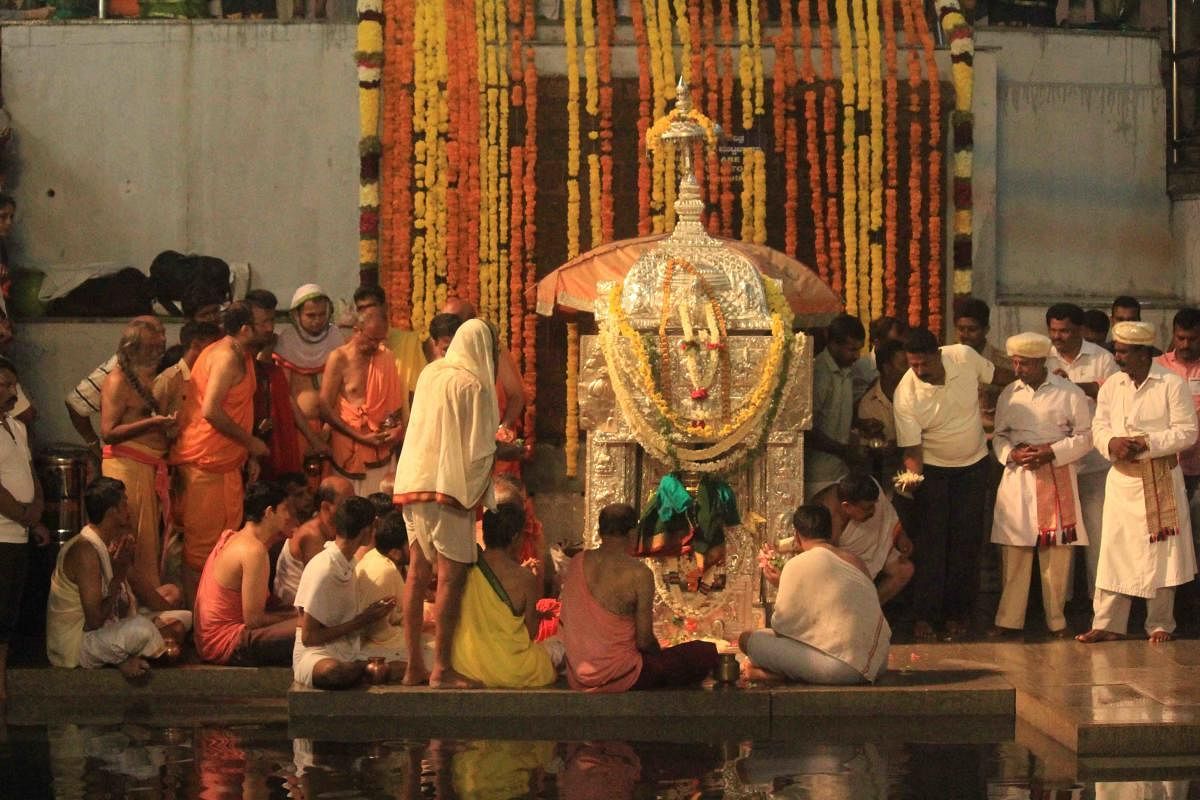
Kaveri Sankramana, an auspicious festival of Kodavas, is celebrated on the first day of Tula or Tholyar month of the Hindu calendar which generally falls in mid-October. This festival celebrates the birth of River Kaveri at Talakaveri located on Brahmagiri hills in Kodagu.
The most wonderful aspect of this festival is the theerthodbhava. At a particular time (corresponding to the sun entering and transiting into the Tula Rasi or Libra sign), water starts gushing out of the Brahma Kundike or the fountain head and flows into the pond at Talakaveri. This holy water called theertha is collected by people and is preserved at every Kodava home until the next Sankramana, as it is believed that if this holy water is fed to the dying, they will attain salvation.
From the pond, the river flows underground and re-emerges at some distance from the temple.
People from Kodagu as well as from different regions of the state and elsewhere gather at the holy site to witness this spectacle. It is a common belief that taking a dip in the temple pond washes away one’s sins.
This year too, people plan to go to Talakaveri to witness the theerthodbhava at 7:03 am while taking all necessary precautions. Kodava men in traditional kupya chele and women in Kodava saree will pay obeisance to Goddess Kaveri, who is the chief deity and mother goddess of Kodavas.
Those who cannot make it to Talakaveri, also worship at other pilgrim centers situated on the banks of River Kaveri such as Bhagamandala, Harishachandra, Balamuri and Guyya.
The next day, Kodavas perform Kani Pooja at their homes to worship Goddess Kaveri. Married women draped in silk sarees wrap a coconut in red silk, and deck it with beautiful flowers and traditional gold ornaments. The adorned coconut symbolises Goddess Kaveri and is placed on a tray containing three betel leaves and three areca nuts. An oil lamp called taliyakki bolcha is lit next to it and all the family members worship the goddess by sprinkling rice grains (akshata) on the coconut.
An essential component of this festival is the preparation of dosa and pumpkin curry which is also offered to the gods.
Traditionally, bothh posts (made from a tree, locally called bothh) are installed in front of the house, cow sheds, paddy fields, and coffee estates. Dosa, jaggery and small coconut pieces are placed on these posts, only to be eaten by mischievous children when no one is watching.
According to folklore, people placed these tree posts to mark their properties when Pandavas after losing their kingdom to Kauravas had visited Kodagu and had asked Goddess Kaveri to give them some land.
However, it is said that the main reason for placing these stumps is to protect the growing paddy and other crops by scaring away birds and repelling insects. Some also say that it wards away evil spirits and ensures a bumper harvest.